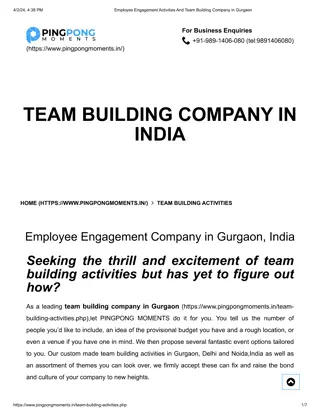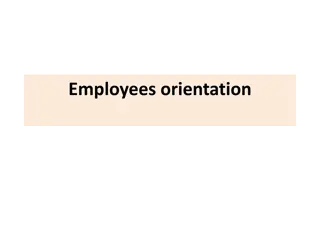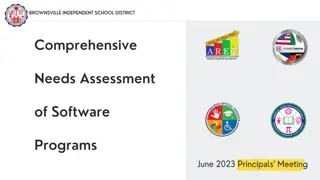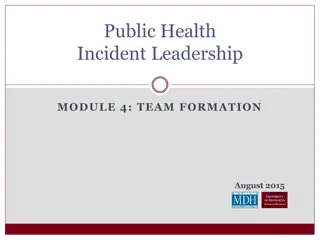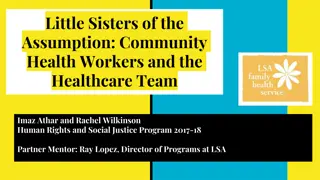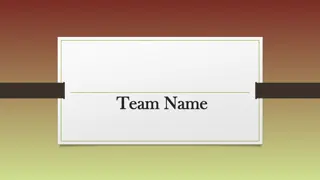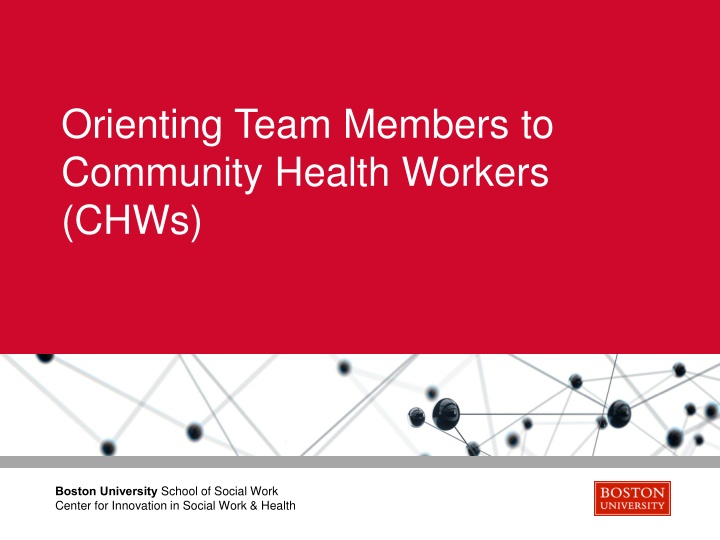
Effective Strategies for Orienting Team Members to Community Health Workers
Enhance your team's understanding of Community Health Workers (CHWs) with this comprehensive guide from Boston University School of Social Work. Learn how to create a welcoming environment, outline steps for team orientation, address challenges in achieving buy-in, and develop action plans for integrating CHWs within your organization. Discover the importance and benefits of orienting staff to CHWs, along with practical tips for successful orientation.
Download Presentation

Please find below an Image/Link to download the presentation.
The content on the website is provided AS IS for your information and personal use only. It may not be sold, licensed, or shared on other websites without obtaining consent from the author. If you encounter any issues during the download, it is possible that the publisher has removed the file from their server.
You are allowed to download the files provided on this website for personal or commercial use, subject to the condition that they are used lawfully. All files are the property of their respective owners.
The content on the website is provided AS IS for your information and personal use only. It may not be sold, licensed, or shared on other websites without obtaining consent from the author.
E N D
Presentation Transcript
Orienting Team Members to Community Health Workers (CHWs) Boston University School of Social Work Center for Innovation in Social Work & Health
Orienting Team Members to CHWs Learning Objectives Boston University Slideshow Title Goes Here At the end of this unit, you will be able to: Create a welcoming environment for CHWs Outline steps associated with orienting a team to include a CHW Identify challenges to achieving buy-in for a CHW position Create an action plan to orient CHWs to other staff members
Orienting Team Members to CHWs Welcome CHWs Boston University Slideshow Title Goes Here VS
Orienting Team Members to CHWs What CHWs Need Boston University Slideshow Title Goes Here Space Supplies Protocols Formal training Professional development activities Supervision
Orienting Team Members to CHWs Importance of Orientation Boston University Slideshow Title Goes Here It is critical to the success and sustainability of CHW programs that all employees in an organization understand the unique roles, philosophy, and goals of utilizing CHWs. This understanding will also provide a workplace culture that is more likely to value CHW work and leadership within the organization (not valuing CHW work can lead to poor performance, absences, and turnover). It also helps set the stage for new employees to view CHWs as their colleagues and coworkers.
Orienting Team Members to CHWs Orienting the Team Boston University Slideshow Title Goes Here What the team needs: To understand the unique role, philosophy, and goals of the CHW model Help viewing CHWs as colleagues with a unique perspective A work culture that is welcoming and values the CHW role To know how to discuss CHW services with patients To know how to plan services together Ability to contribute to the ongoing development of CHWs
Orienting Team Members to CHWs Strategies for Orienting Non-CHW Staff Boston University Slideshow Title Goes Here Conduct an in-service presentation/training during an all staff meeting. Share the job descriptions that CHWs will perform to foster understanding. Set up a series of individual meetings between CHW and non- CHW staff. Test non-CHW staff for understanding of the CHW role. Present the CHW role as yet another way to support our patients show non-CHW staff how the CHW role will enhance their understanding of the patients. Make sure non-CHW staff are making ongoing referrals to the CHW and marketing CHW services appropriately.
Orienting Team Members to CHWs Challenges to Achieving Buy-In Boston University Slideshow Title Goes Here Challenges Consequences Potential Solutions
Orienting Team Members to CHWs Challenges to Achieving Buy-In Boston University Slideshow Title Goes Here Challenges Physicians and staff expressing difficulty in trusting or accepting CHWs due to paraprofessional status Clinical staff expressing resentment about or feeling threatened by the presence of a CHW on the team (staff competition) Lack of time; schedule disruption Consequences Underutilization of CHW CHWs appease staff by doing favors (e.g., acting as receptionist, retrieving charts, faxes) diverting CHW s time from their duties CHW under supervised Potential Solutions Educate clinical staff about CHW training and appropriateness to role Include key medical staff in training process; development of training standards Educate staff on CHW model, role, boundaries, referral structure Foster teamwork Emphasize role as supplemental and not a replacement for other staff

